Dahlias are one of the most commonly grown flowering plants across the world. Not only are they diverse, but they are also available in different colors and are resilient too. However, nothing in this world is 100% perfect, right? Growing dahlias might be simple and have low maintenance but certain external factors eventually take precedence and lead to the drooping of the leaves.
Not only but multiple reasons could be causing the leaves to wilt and droop and we will be discussing some of the most common reasons why and what you can do to fix the issues.
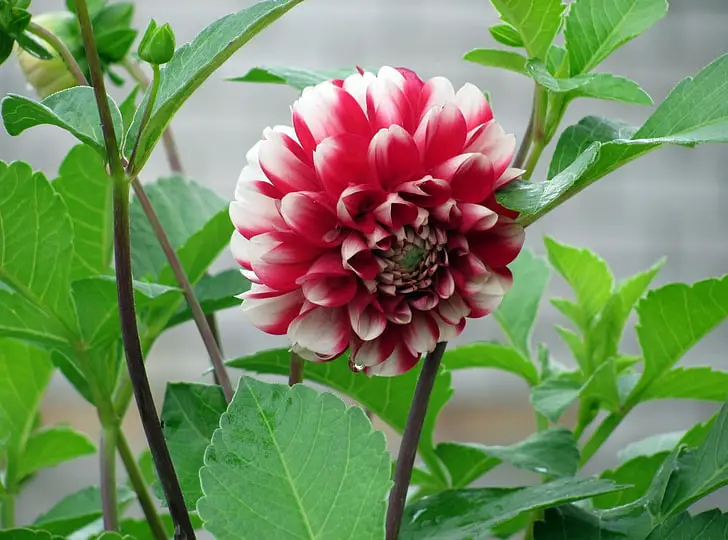
Like every other complication related to gardening, your first step to reviving the dahlia plant is to find what’s causing it. Knowing the issue makes it easier to implement correct interventions for the optimal growth of the plant.
What are the Causes of Drooping Leaves in Dahlia?
There are quite a few reasons your dahlia leaves could be drooping. Ideally, it could be a single factor or a combination of factors. Your work is to identify the issue and then eradicate it from the root so things don’t take a turn for the worse.
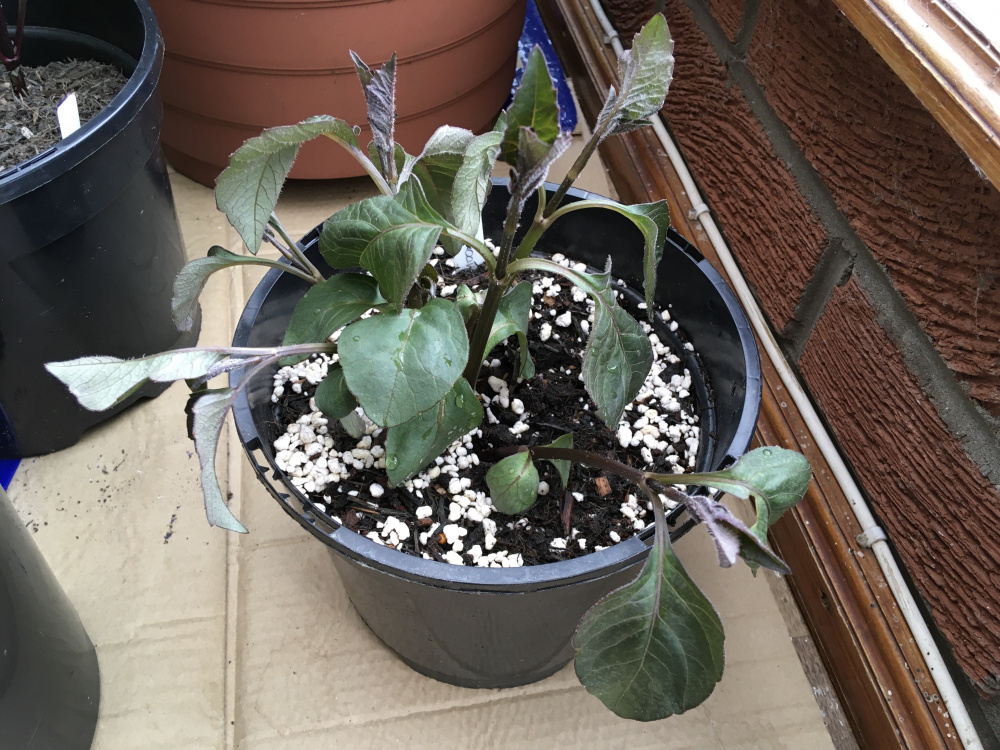
Following are some of the factors you need to be mindful of:
1. Incorrect Watering
Dahlia plants are very resilient and might withstand improper growing parameters to an extent but won’t do well with a lack of water. Since they are tropical plants, they thrive in soils with high moisture content. They need a good water level in the soil to support their growth and ensure optimal nutrient uptake.
Lack of water leads to less nutrient uptake by the stems and leaves, leading to drooping and wilting of the leaves. If you don’t take immediate measures, the lack of water in the soil will also dry out the leaves entirely.
On the flip side, ensure that you aren’t overwatering the dahlia plants. Like dryness in the leaves, overwatering leads to risks of root rot, which can damage the plant quicker than you realize. Use a soil moisture meter to keep a check on the moisture levels in the soil.
How to fix it?
Your only way to ensure that your dahlia plant is getting enough water is to check the soil. You don’t want it to be dry but you don’t want it to be soggy as well. If the soil seems soggy, wait for it to dry and then rewater the soil after that. Also, add organic mulch into the soil to ensure that the soil is well-drained but retains enough moisture as needed.
2. Soil Issues
Fertilizers are necessary to supply optimal nutrients to the dahlia plant that you are growing. However, things get complicated when there are excessive nutrients in the soil. Excess nutrients lead to toxicity, which might cause the leaves to droop and dry.
Also, excess nutrients in the soil will prevent optimal water uptake through the roots, leading to wilting and droopy leaves in the Dahlia plant.
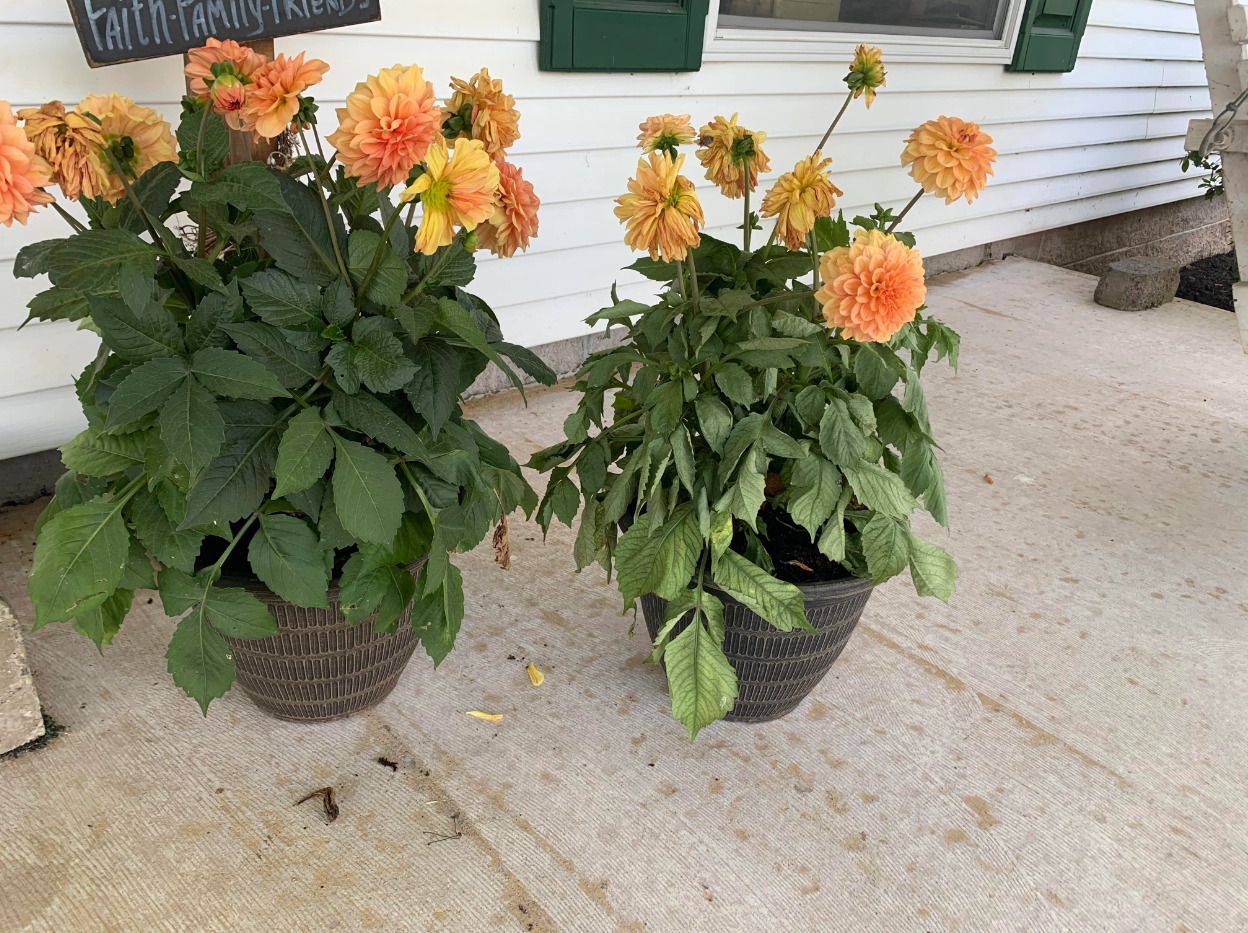
Besides the nutrient balance, check the pH levels too. Dahlias need slightly acidic soil for growth and development. If the nutrient toxicity is high, chances are that the same will show up on the pH meter as well.
How to fix it?
If you find the nutrient balance to be high in the soil, using acidic fertilizers can lower the levels exponentially well. Adding organic mulch to the soil can also dissipate the nutrients and ensure that the plant is getting the right amount of nutrients as needed. Ideally, maintain a ratio of 5:10:10 for nitrogen, phosphorus, and potassium in the soil.
3. Excessive Sunlight
Next up on the list of complications is excessive sunlight, which is quite potent when you come to think of it. Dahlias need prolonged and persistent sunlight exposure, especially during the morning hours.
However, excess sunlight exposure is associated with leaf complications like wilting, drooping, and yellowing. If you notice the edges of the leaves turning yellow, chances are that the sunlight is excessive and not optimal.
Look out for the area where the plan is placed and put it in the shade where it will receive indirect sunlight for the remainder of the day.
How to fix it?
If you live somewhere tropical where the summers are harsh, you can replenish the water in the soil and also cover the dahlia plant with thin cheesecloth. What this will do is protect the plant from direct sunlight and prevent drooping.
4. Pest Attacks
There is no alternative to the impacts of the pests in the garden. We live with them but an excess infestation of aphids, mites, and a few types of nematodes are associated with wilting and drooping of the leaves of the Dahlia plant.
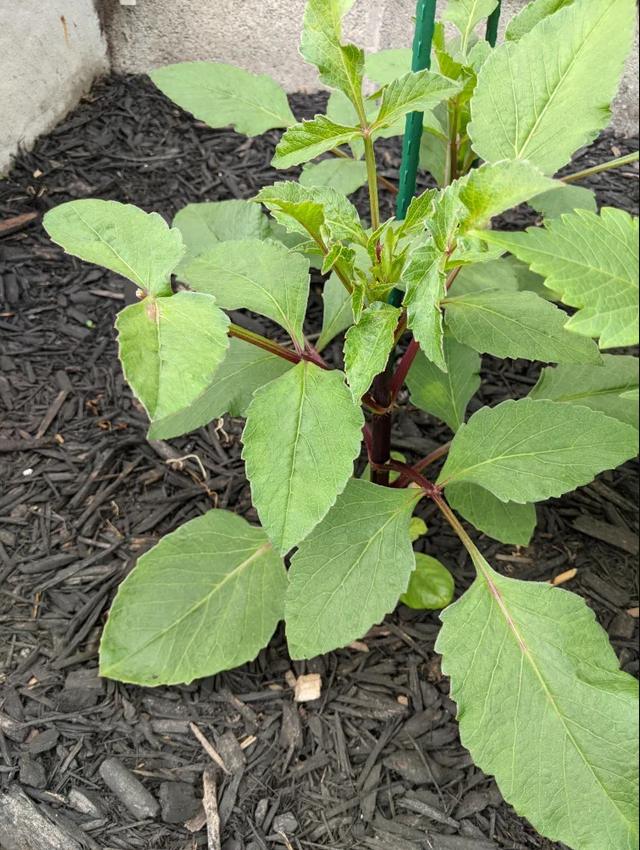
If you notice aphids and mites, take immediate measures since they will otherwise such on the stems and leaves and alter the nutrient balance. The nematodes are notorious for preventing optimal uptake of water and nutrients, which affect the plant’s growth.
How to fix it?
Your quickest fix is to use a pesticide on the plant. Some of the natural remedies include using neem oil or horticultural oil on the leaves, stems, and surrounding areas to keep the pests out of the area.
5. Fungal Attacks
Last on the list of complications are the fungal problems. These lead to risks of root or stem rots, which directly affect the growth of the plant and the foliage in the plant.
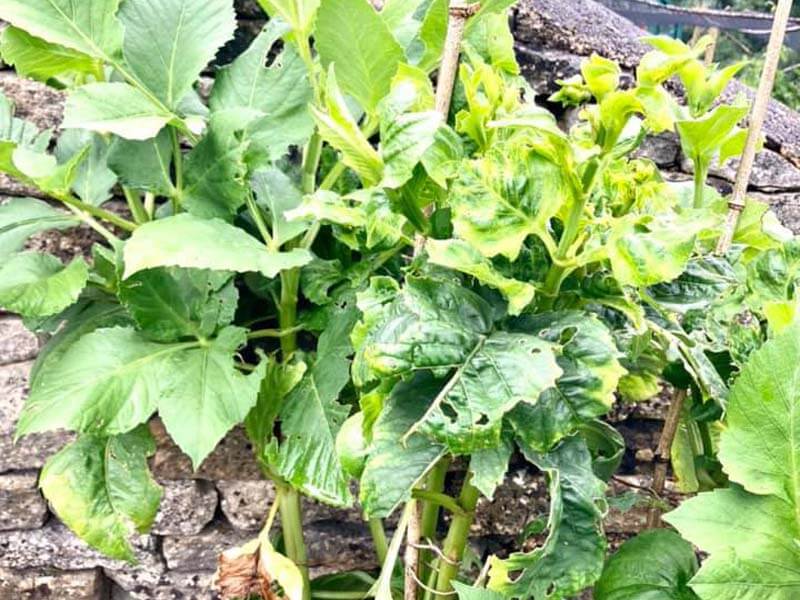
One of the most common causes of root rot is overwatering or water logging in the soil. So, keep an eye out for that. You need to allow the plant to absorb the water before you add more.
How to fix it?
The first step is to remove the infected leaves from the plant. This will preserve the rest of the plan and ensure that the root rot doesn’t spread any further. Also, if the issue is related to watering, ensure that you don’t overwater.
FAQs
1. Why are my dahlias leaves drooping?
Drooping leaves in dahlias is a sign of external stress on the plant. If you notice things getting worse progressively, we’d recommend that you identify what’s causing the stress and then implement relevant measures to fix the problem before it takes a turn for the worse.
2. How do you fix wilting dahlias?
The only way to fix wilting dahlias is to check the water and nutrition levels in the soil. Also, be mindful of light exposure since dahlias don’t perform very well when exposed to excessive or prolonged sunlight. Managing these external stressors should fix the issue your plants are facing.
3. What’s wrong with my dahlia leaves?
If you are noticing drooping or discoloration of the dahlia leaves, the most common reason behind the same is risks of overwatering, nutritional imbalance, or growth of molds and mildew. Whatever the cause is, you need to identify the problem first, following which you can then implement the relevant fix to reverse the damage.
4. What do Overwatered dahlias look like?
The two most prominent signs of overwatering dahlias are wilting or limp dahlia leaves. You might also notice that the leaves and even the flowers become soft and mushy in that case. Besides that, signs of yellow and brown spots all over the leaves also indicate that your dahlias are overwatered.
5. How do you get dahlias to perk up?
If you notice the dahlias wilting or dying, the best way to boost their health is by spraying some fertilizer in the soil. Sometimes, lack of optimal nutrition leads to wilting and dying. Also, if you notice any signs of infection or mildew growth, implement an immediate fix for those too.
Conclusion
How many of these complications did you know of? Ideally, we’d recommend keeping all these factors in mind to ensure that you can take the relevant measures if the issue arises with your dahlia plant in the garden.

![5 Reasons for Dahlia Leaves Drooping [Troubleshooting Guide]](https://www.plantsofmerit.org/wp-content/uploads/2022/07/5-Reasons-for-Dahlia-Leaves-Drooping-Troubleshooting-Guide.jpg)